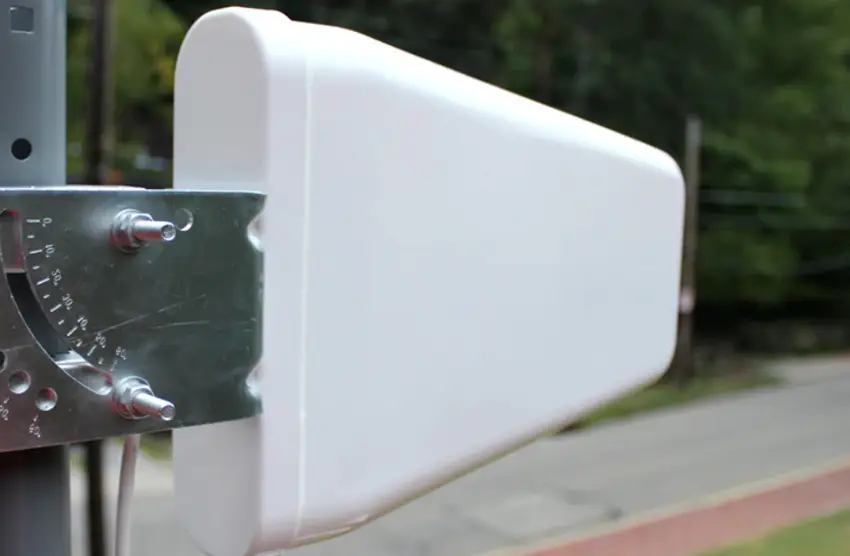In the world of 5G cellular connectivity, the choice of antenna can make a significant difference in signal strength, reliability, and overall performance. While both directional and omni-directional (omni) antennas have their place in wireless communication, directional antennas consistently outperform omni antennas in specific use cases. In this blog post, we’ll explore the reasons why directional cellular antennas are often the superior choice for enhancing cellular signal strength and reliability.
Understanding the Basics: Directional vs. Omni Antennas
Omni-Directional Antennas:
These antennas radiate and receive signals in all directions (360 degrees), providing coverage in a circular pattern. They are ideal for general use cases where the signal source is not fixed or when multiple devices need connectivity from various directions.
Directional Antennas:
These antennas focus their signal in a specific direction, creating a narrow, concentrated beam. They are designed to target a single signal source, such as a cell tower, and are ideal for long-range or weak signal scenarios.
Directional Antennas always WIN: Directional antennas provide 3x better range and data transmission compared to omni antennas
Why Directional Antennas Outperform Omni Antennas
- Higher Gain and Signal Strength
Directional antennas are designed to concentrate their energy in a single direction, which results in higher gain compared to omni antennas. This focused beam allows them to capture and transmit signals over longer distances with greater precision. In contrast, omni antennas spread their energy in all directions, which can lead to signal dilution and weaker performance over long distances. - Improved Signal-to-Noise Ratio (SNR)
By focusing on a specific signal source, directional antennas can effectively reduce interference from unwanted signals or noise. This results in a cleaner, stronger connection with a higher SNR, which is critical for maintaining reliable cellular connectivity, especially in areas with weak signals or high interference. - Longer Range
Directional antennas are the go-to solution for long-range communication. Whether you’re in a rural area far from the nearest cell tower or need to connect to a distant base station, a directional antenna can provide the necessary range and signal strength that an omni antenna simply cannot match. - Better Performance in Weak Signal Areas
In areas with poor cellular coverage, directional antennas can make a significant difference. By targeting the nearest or strongest cell tower, they can pull in signals that would otherwise be too weak for an omni antenna to detect. This makes them ideal for remote locations, construction sites, or buildings with thick walls that block signals. - Reduced Interference
Omni antennas are more susceptible to interference from nearby devices, competing signals, or environmental obstacles because they receive signals from all directions. Directional antennas, on the other hand, are less affected by interference since they focus on a single direction, effectively filtering out unwanted signals. - Ideal for Fixed Locations
If your cellular setup is in a fixed location (e.g., a home, office, or RV), a directional antenna is often the better choice. Once properly aligned with the nearest cell tower, it can provide consistent, high-quality connectivity without the need for constant adjustments.
When to Use Omni Antennas
While directional antennas outperform omni antennas in many scenarios, omni antennas still have their place. They are ideal for mobile applications, such as vehicles or boats, where the signal source may change direction frequently. They are also useful in urban environments with multiple cell towers, where a 360-degree coverage pattern is beneficial.
Conclusion: Directional Antennas Are the Clear Winner for Targeted Connectivity
In summary, directional cellular antennas outperform omni antennas in terms of gain, range, signal clarity, and interference reduction. Their ability to focus energy in a specific direction makes them the superior choice for fixed locations, weak signal areas, and long-range communication. However, the best antenna for your needs ultimately depends on your specific use case. If you’re looking to maximize your cellular signal strength and reliability, a directional antenna is often the way to go.
Whether you’re setting up a home cellular booster, improving connectivity in a remote office, or enhancing your RV’s internet connection, investing in a high-quality directional antenna can make all the difference. So, the next time you’re faced with the choice between directional and omni antennas, remember: directionality equals performance.
